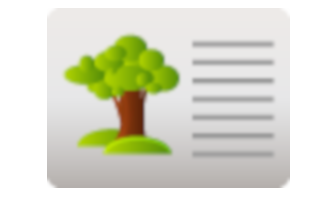The solar system
Science, Grade 5
The solar system
Study Guide

The solar system
Flash Cards

The solar system
Quiz

The solar system
Worksheets

The solar system
Games

Study Guide The solar system Science, Grade 5
❮
1
/
3
❯
THE SOLAR SYSTEM Planets of our solar system A planet is a large body that revolves around the Sun. All planets in our solar system rotate and they all revolve around the Sun. Let’s take a look at the INNER planets: Mercury is the closest planet to the Sun. It is the smallest planet in the solar system. Mercury has almost no atmosphere and has HUGE temperature changes on its surface. Venus is a very hot and rocky planet with no moons. Its atmosphere is made up of thick, poisonous gases. Earth is the third planet from the Sun and you guessed it - it is the planet we live on!! Earth is the only planet in our solar system that can support life, which is why we can live in it. The fourth planet from the Sun is the planet Mars. Mars has a thin atmosphere which is made up mostly of carbon dioxide. It is often referred to as the “red planet” because it looks red! The iron in its surface is what gives Mars its red appearance. Now let’s look at the OUTER planets: The fifth planet from the Sun is Jupiter. Jupiter is the largest planet in the solar system and is made up of gases. The sixth planet from the Sun is Saturn. Saturn is famous for its rings – and you might be amazed to discover that the rings are made of ice and rock! The seventh planet from the Sun is Uranus. A cool fact about Uranus is that it has 26 moons. © Copyright NewPath Learning. All Rights Reserved. Permission is granted for the purchaser to print copies for non-commercial educational purposes only. Visit us at www.NewPathLearning.com.
The eighth planet from the Sun is Neptune. Neptune is also made up of several different types of gases. What about Pluto? Pluto was once considered a planet but is now classified as a dwarf planet. Lesson Checkpoint: Name one fact about each of the 8 planets. Orbits of the Planets Each planet in the solar systems takes different amounts of time to orbit around the Sun. The farther away the planet is from the sun, the longer it takes them to revolve around the Sun than those closer to the Sun. How do planets stay in orbit? Gravity. The pull of gravity from the Sun keeps the planets in their orbits. Earth’s orbit around the sun It takes the Earth about 365.25 days to complete one revolution around the Sun. The path that the Earth follows as it revolves around the sun is called its orbit. The Asteroid Belt The asteroid belt is located between Mars and Jupiter. It contains thousands of asteroids, which are pieces of rock that vary in size and also orbit around the Sun. Some asteroids are less than a mile wide and some are over 400 miles wide! © Copyright NewPath Learning. All Rights Reserved. Permission is granted for the purchaser to print copies for non-commercial educational purposes only. Visit us at www.NewPathLearning.com.
Comets, Meteors, and Meteorites Comets are made of ice and rock. They have four parts: • a nucleus which is the solid portion of the comet and is made of dust and ice, • a coma which is a cloud of dust and evaporated gases, and • an ion tail and • a dust tail. Meteors are also made of rock and ice. They are sometimes referred to as shooting stars. Meteors form when meteoroids hit the Earth’s atmosphere. Meteoroids are basically small asteroids. The Milky Way Galaxy Home sweet home. Planet Earth, our Sun, and all the planets that orbit our Sun are located in the Milky Way galaxy. A galaxy is a HUGE system of dust, stars, and gas which are all held together by gravity. Lesson Checkpoint: How long does it take the Earth to complete one revolution? © Copyright NewPath Learning. All Rights Reserved. Permission is granted for the purchaser to print copies for non-commercial educational purposes only. Visit us at www.NewPathLearning.com.
